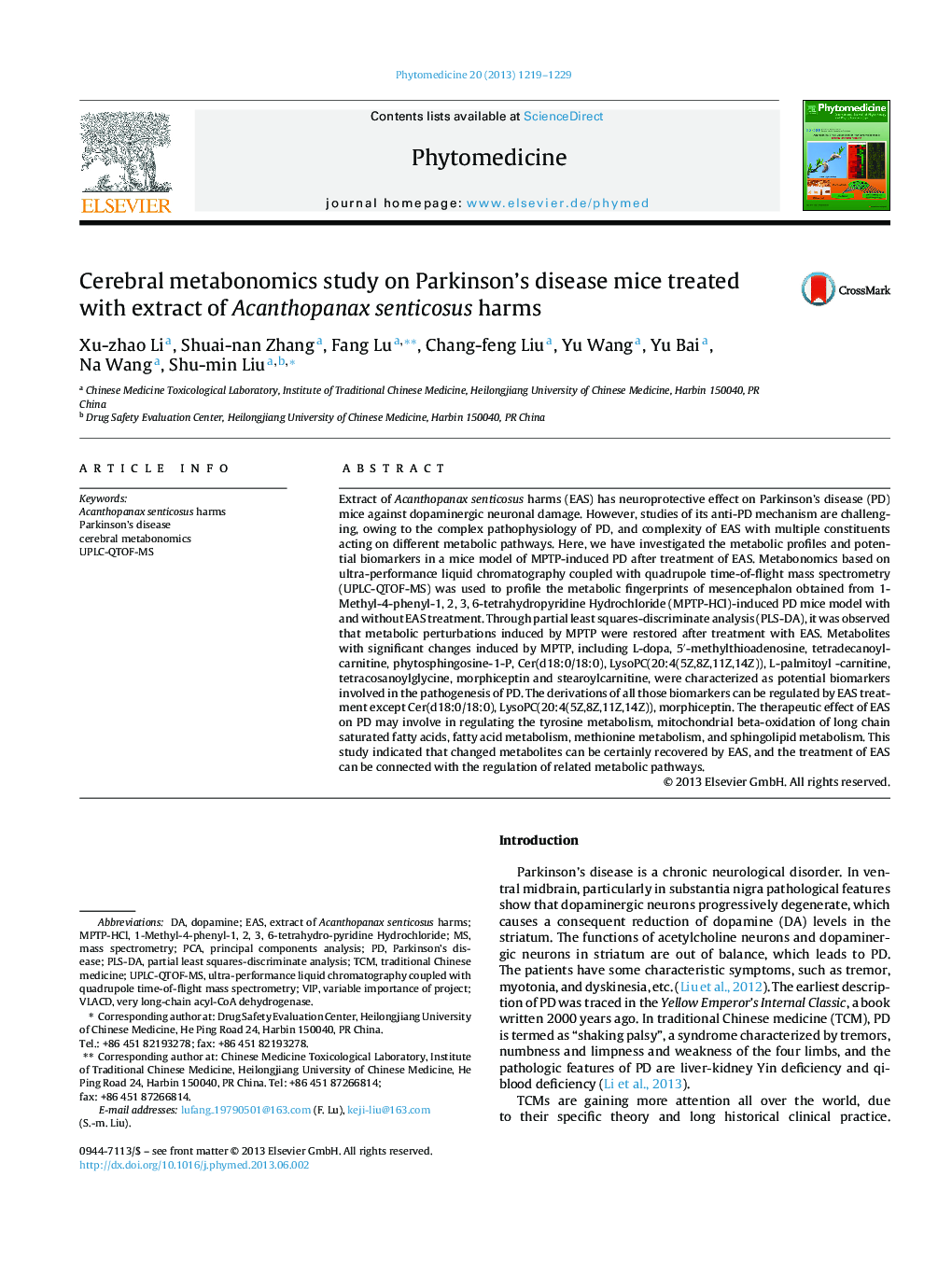| Article ID | Journal | Published Year | Pages | File Type |
|---|---|---|---|---|
| 2496697 | Phytomedicine | 2013 | 11 Pages |
Extract of Acanthopanax senticosus harms (EAS) has neuroprotective effect on Parkinson's disease (PD) mice against dopaminergic neuronal damage. However, studies of its anti-PD mechanism are challenging, owing to the complex pathophysiology of PD, and complexity of EAS with multiple constituents acting on different metabolic pathways. Here, we have investigated the metabolic profiles and potential biomarkers in a mice model of MPTP-induced PD after treatment of EAS. Metabonomics based on ultra-performance liquid chromatography coupled with quadrupole time-of-flight mass spectrometry (UPLC-QTOF-MS) was used to profile the metabolic fingerprints of mesencephalon obtained from 1-Methyl-4-phenyl-1, 2, 3, 6-tetrahydropyridine Hydrochloride (MPTP-HCl)-induced PD mice model with and without EAS treatment. Through partial least squares-discriminate analysis (PLS-DA), it was observed that metabolic perturbations induced by MPTP were restored after treatment with EAS. Metabolites with significant changes induced by MPTP, including L-dopa, 5′-methylthioadenosine, tetradecanoylcarnitine, phytosphingosine-1-P, Cer(d18:0/18:0), LysoPC(20:4(5Z,8Z,11Z,14Z)), L-palmitoyl -carnitine, tetracosanoylglycine, morphiceptin and stearoylcarnitine, were characterized as potential biomarkers involved in the pathogenesis of PD. The derivations of all those biomarkers can be regulated by EAS treatment except Cer(d18:0/18:0), LysoPC(20:4(5Z,8Z,11Z,14Z)), morphiceptin. The therapeutic effect of EAS on PD may involve in regulating the tyrosine metabolism, mitochondrial beta-oxidation of long chain saturated fatty acids, fatty acid metabolism, methionine metabolism, and sphingolipid metabolism. This study indicated that changed metabolites can be certainly recovered by EAS, and the treatment of EAS can be connected with the regulation of related metabolic pathways.
Graphical abstractFigure optionsDownload full-size imageDownload high-quality image (191 K)Download as PowerPoint slide
